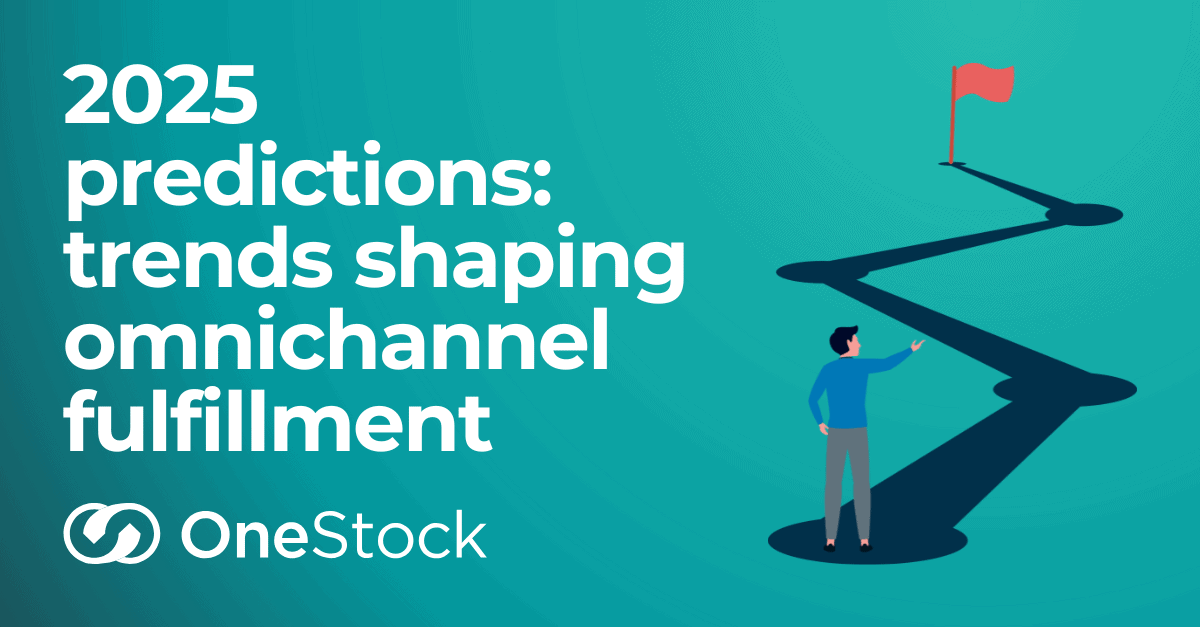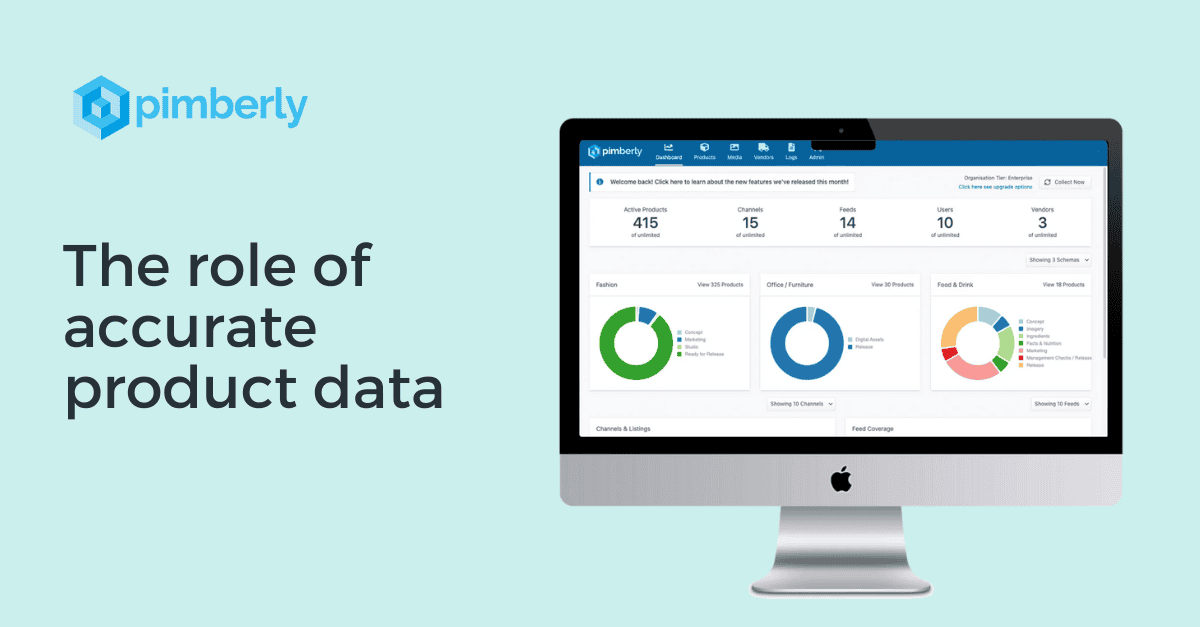
2025 predictions: trends shaping omnichannel fulfillment
As commerce continues to evolve, 2025 will redefine how brands engage with customers, deliver on their promises and remain competitive in an ever-changing marketplace. To succeed, brands must anticipate what’s next, embrace new technologies and adapt to changing consumer behaviour.
At OneStock, we’ve identified the transformative trends that will shape the omnichannel landscape in 2025. With insights from Vincent (CPO) and Guillaume (Product Marketing Leader), let’s explore the future together!
AI-powered personalisation: the new standard in customer experience
AI is no longer an asset, it’s a necessity. By 2025, advanced AI tools will enable retailers to deliver unique, real-time shopping experiences. But personalisation doesn’t stop at product recommendations, it extends to fulfilment. With an OMS, retailers can ensure that the personalised experience is carried through to how and when customers receive their orders, enabling intelligent inventory allocation and dynamic delivery options.
“AI is the backbone of modern retail. By leveraging intelligent data across channels, it is transforming the way retailers approach fulfilment. Combining real-time customer data with OMS capabilities ensures that personalisation doesn’t stop at the checkout, but is embedded into every step of the customer journey.”
Composable commerce: Building the retail ecosystem of the future
In 2025, the path to retail success lies in unifying commerce through agility and flexibility. Composable commerce will dominate, offering retailers two distinct approaches to achieving seamless omnichannel experiences:
The best-of-breed approach: Retailers can connect pre-composable solutions, such as a commerce engine, search engine and marketing engine, to build a modular and highly customised ecosystem. This approach allows brands to select and integrate the best tools for their unique needs, creating a tailored experience.
The unified approach: Alternatively, some retailers may opt for more monolithic solutions such as Shopify, which, when paired with an OMS, can deliver a fully unified commerce experience. This approach simplifies integration and ensures consistency across all customer touchpoints.
At the heart of both strategies, an OMS plays a critical role. It connects inventory, orders and fulfilment across channels, ensuring that retailers can innovate quickly, adapt to trends and deliver consistent, seamless experiences whether online, in-store or somewhere in between.
“Unifying commerce is not just about modularity or monoliths. It’s about creating an agile ecosystem that meets customer expectations, with an OMS as the backbone to enable scalability and operational excellence.”
Social commerce: where community meets commerce
Social platforms have become the new storefronts, and in 2025 their influence will grow exponentially. TikTok, Instagram and emerging players will blur the lines between entertainment and shopping, making impulse purchases the norm. Brands will need robust, flexible fulfilment solutions to keep up with the immediacy of social-driven demand.
“Social commerce is about meeting customers where they are, and TikTok is emerging as a key platform for driving traffic to retailers. It’s not just about selling, it’s about creating meaningful connections that turn engagement into trust and trust into transactions. An OMS plays a critical role in delivering on the promise of TikTok, ensuring that the excitement of impulse buying translates into fast, accurate fulfilment. This bridge between discovery and delivery is what turns traffic into happy, repeat customers.“
Sustainability: transparency is non-negotiable
Sustainability will no longer be a differentiator, it will be an expectation. Consumers are demanding transparency across the entire product lifecycle, from sourcing to delivery. Brands that invest in sustainable fulfilment practices, such as green delivery options and transparent supply chains, will gain a competitive advantage while contributing to a better planet.
“Sustainability begins with visibility. An OMS provides the transparency retailers need to give eco-conscious consumers the accountability they demand.”
Luxury goes digital: meeting the gen Z shopper
Luxury retail is experiencing a digital renaissance. As Gen Z shoppers dominate the market, their preferences for online shopping, personalisation and immediacy are pushing luxury brands to innovate. From virtual boutiques to premium delivery experiences, the future of luxury lies in balancing exclusivity with convenience.
“Luxury brands can no longer rely on heritage alone; they need to deliver digital experiences that feel as exclusive as their products. An OMS allows them to offer the convenience that Gen Z demands without compromising their premium brand values.”
The evolving role of store employees
The role of the store associate is evolving from transactional to strategic. They will act as fulfilment experts, customer advisors and omnichannel facilitators. Equipping them with the right tools will enable them to deliver personalised experiences while driving operational efficiencies.
“Store associates are now the linchpins of omnichannel fulfilment. With the support of an OMS, they can efficiently manage everything from Click and Collect to returns.”
Marketplaces and disruptors: the new retail battlefield
Marketplaces remain dominant, but the rise of disruptors such as Shein, Temu and Vinted is shaking up the ecosystem. These players are reshaping consumer expectations in terms of price, speed and convenience. To stay relevant, retailers need to rethink their fulfilment strategies and find ways to stand out in an increasingly crowded field.
“The rise of disruptors is a wake-up call for traditional retail. To compete with disruptors, retailers need a flexible OMS that delivers speed, accuracy and innovation across all fulfilment channels.”
Bringing B2C excellence to B2B commerce
B2B commerce is undergoing a transformation, with increasing pressure to match the seamless, customer-centric experiences seen in B2C. However, B2B retailers face unique challenges, including multiple order channels such as sales applications, order emails and EDI. To meet these demands, an OMS is essential. By automating the entire order workflow, leveraging inventory across all channels and ensuring on-time delivery, an OMS enables B2B companies to deliver the same levels of efficiency, visibility and satisfaction as their B2C counterparts.
“B2B commerce is no longer exempt from the expectations set by B2C. An OMS enables B2B players to bridge the gap, automating complex workflows and ensuring that customers enjoy the same seamless experience regardless of the channel they use to place their order.”
Preparing for the future with OneStock
The trends shaping 2025 require more than observation – they require action. From embracing AI-driven personalisation to rethinking sustainability, retailers must align their fulfilment strategies with these changes to thrive in an increasingly complex retail landscape.
At OneStock, we’re committed to helping retailers stay ahead. Our OMS enables seamless omnichannel fulfilment and empowers brands to adapt, innovate and succeed.
Are you ready to lead the way in 2025?
Contact us today to future-proof your omnichannel operations.


